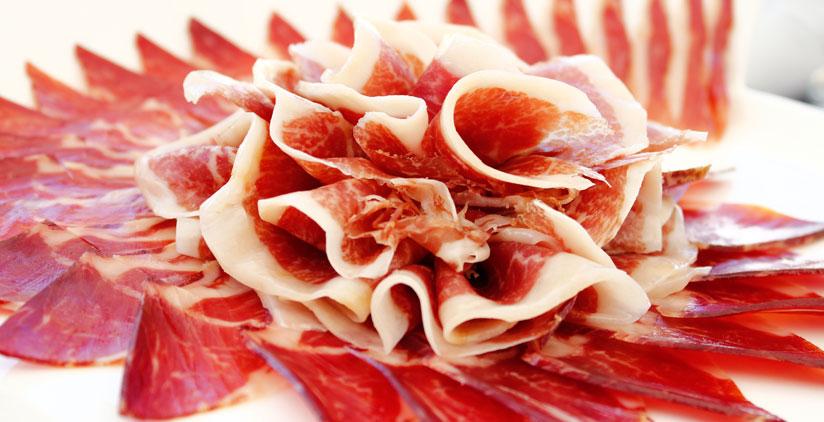
Mapa web
Productos
Dónde encontrarnos
borja.miranda@campobadajoz.com
Avenida de la Estación 4,
06300 Zafra (Badajoz), Spain

When we talk about superior quality ham, two terms that often come up are “jamón ibérico” and “jamón de pata negra”. These names are used to describe two types of premium ham, but what are the real differences between them? In this article, we will explore the unique characteristics of each and unveil the secrets behind these culinary gems.
Iberian ham is a gastronomic delicacy that comes from Iberian pigs, a breed native to the Iberian Peninsula. These pigs are raised under special conditions, fed mainly on acorns and grass during the montanera stage. This natural diet, rich in unsaturated fatty acids, gives Iberian ham its distinctive flavor.
Iberian ham is characterized by its smooth and juicy texture, its intramuscular marbling and its intense and aromatic flavor. It can be cured for up to several years, which gives it a unique complexity of flavors. The classification of Iberian ham is based on the purity of the breed and the pig’s diet, with 100% Iberian acorn-fed hams being the most highly valued.
The term “pata negra” is commonly used to refer to the highest quality Iberian ham, but can also refer to other high quality cured hams. This name comes from the dark color of the hoof of the Iberian pig. Therefore, not all pata negra hams are necessarily Iberian hams.
Pata negra ham can come from different breeds of pigs, not exclusively from Iberian pigs. Some examples are pata negra Serrano ham, which comes from white pigs raised in the Teruel region of Spain, or Italian pata negra ham, made from pigs raised in Italy.
The main difference between Iberian ham and pata negra ham lies in the origin of the pig. Iberian ham comes exclusively from Iberian pigs, while the term pata negra can include different types of high quality cured ham.
Another important difference is food. Iberian pigs raised for Iberian ham are fed on acorns and grass during the “montanera”, which confers a unique flavor and texture.

borja.miranda@campobadajoz.com
Avenida de la Estación 4,
06300 Zafra (Badajoz), Spain

